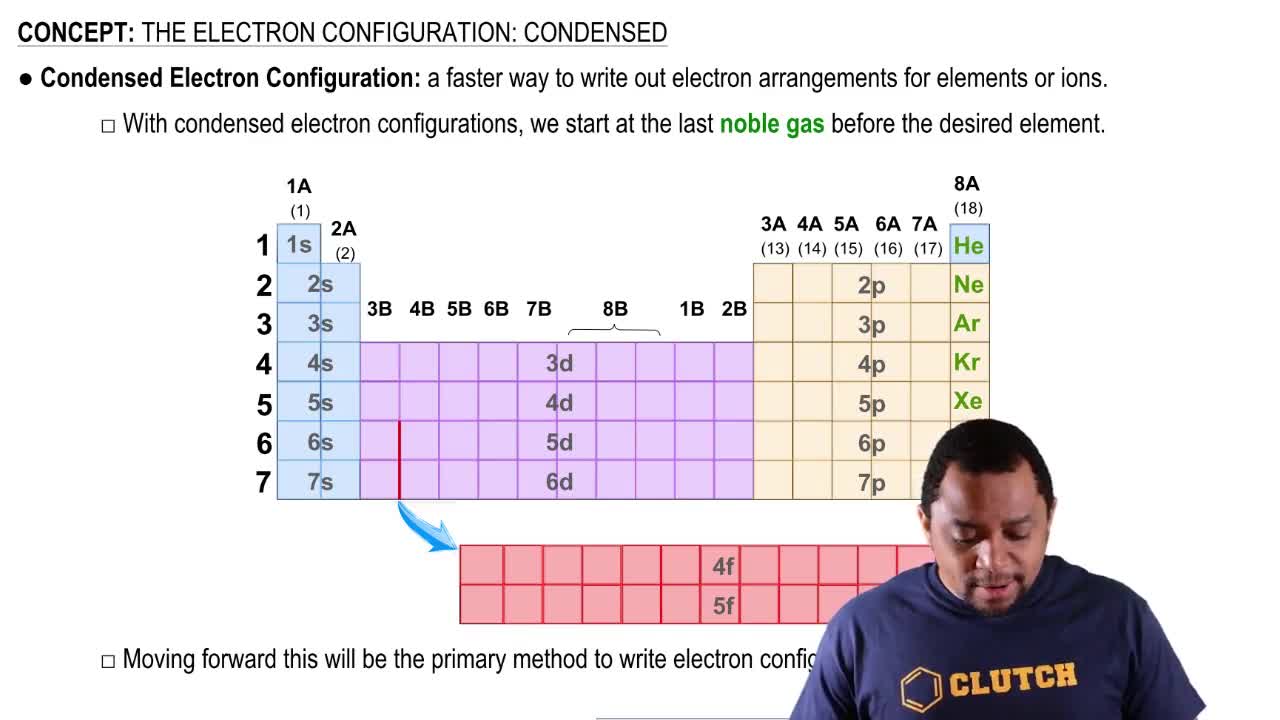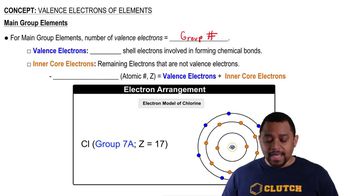Here are the essential concepts you must grasp in order to answer the question correctly.
Electron Configuration
Electron configuration describes the distribution of electrons in an atom's orbitals. For elements like sulfur, bromine, and silicon, understanding their electron configurations helps determine how electrons are arranged in the valence shell, particularly in the p subshell, which is crucial for visualizing electron pairing.
Recommended video:
The Electron Configuration: Condensed
Valence Electrons
Valence electrons are the outermost electrons of an atom and are involved in chemical bonding. The number of valence electrons influences how atoms interact with each other. For sulfur, bromine, and silicon, identifying their valence electrons is essential for accurately representing electron pairing in the p subshell.
Recommended video:
Valence Electrons of Elements (Simplified) Concept 1
Pauli Exclusion Principle
The Pauli Exclusion Principle states that no two electrons in an atom can have the same set of quantum numbers, which means that an orbital can hold a maximum of two electrons with opposite spins. This principle is fundamental when illustrating electron pairing in the p subshell, as it dictates how electrons are arranged and paired within the orbitals.
Recommended video:
The following is an endothermic reaction where Kc = 6.73 x 103.For each of the choices below predict in which direction the reaction will proceed
 Verified step by step guidance
Verified step by step guidance Verified video answer for a similar problem:
Verified video answer for a similar problem:



 2:15m
2:15m